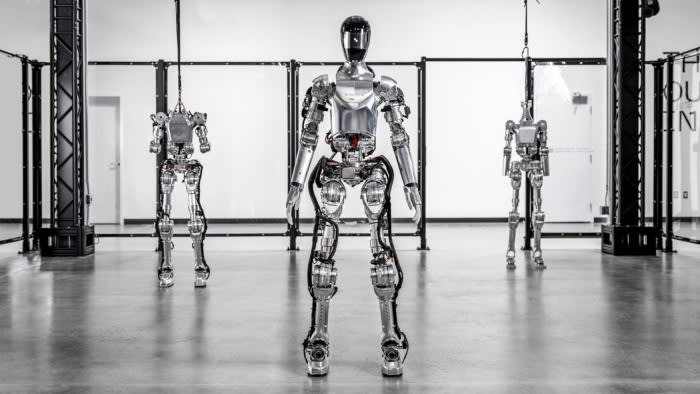- Arvind's Newsletter
- Posts
- Arvind’s Newsletter-Weekend edition
Arvind’s Newsletter-Weekend edition
Issue No #1060
1.GST collection rises 12.5% YoY to ₹1.68 lakh crore in February, gross FY24 sum at ₹18.4 lakh crore, 11.7 per cent higher than the mopup for the same period last fiscal.
The average monthly gross collection for the current fiscal stood at ₹1.67 lakh crore, exceeding ₹1.5 lakh crore in the last fiscal.
This growth was driven by a 13.9 per cent rise in GST from domestic transactions and an 8.5 per cent increase in GST from import of goods.
2.The Indian Schindler:The Maharaja who saved Polish orphans
World leaders and the global business elite will converge this weekend on the Indian city of Jamnagar to celebrate the wedding of billionaire Mukesh Ambani’s son. More than 80 years ago, Jamnagar was in the news for very different reasons. The Maharaja of Jamnagar helped save more than 1000 children, who had been deported to the Soviet Union in the period leading up to World War II, the India Wants To Know newsletter detailed. In 1941, after Nazi Germany invaded, the USSR granted amnesty for deported Polish citizens, allowing the orphans to leave.
After they ended up in western India following an arduous journey through Central Asia, the king of Jamnagar welcomed them, and provided for their housing, medical care, and education. He had “acquired an appreciation for Polish history and culture” after meeting some Poles during a stay in Switzerland in the 1920s, the newsletter wrote. A school in Warsaw was later named after him as gratitude for helping the refugees.
3.Nvidia, Microsoft, Jeff Bezos, and OpenAI all backed a Silicon Valley startup that builds artificial intelligence-powered humanoid robots for workplace use.
Figure AI claims its robots are capable of tasks such as moving crates, which it says could fill up to 10 million “ undesirable or unsafe “ jobs in the U.S. alone, the Financial Times reported. The company said it had raised $675 million at a valuation of $2.6 billion. Amazon is also moving into AI-powered robotics: Its $1 billion industrial innovation fund has made 12 investments, focusing on last-mile deliveries and warehouse logistics. An Amazon official told the FT it would result in a “shift in jobs” but that the company is “ a long way off from replacing all humans.”
4.Global carbon emissions from energy production reached a record high in 2023, despite the growth in zero-carbon sources.
An International Energy Agency report said that energy emissions rose 1.1% to 37.4 billion tonnes, mostly driven by coal use, especially in China. Also, drought caused a shortfall in hydropower generation, which would have helped emissions drop. And had it not been for the growth in green tech the emissions growth would have been three times larger, the report said. The IEA also noted a decoupling of economic growth from emissions: Advanced economies grew 1.7% but their emissions fell 4.5%.
5.Prostate cancer involves two distinct subtypes, new study finds; results may lead to more targeted treatments for the disease, which affects one in eight adult men.
The study, funded by Cancer Research UK and published in journal Cell Genomics, marks the first time researchers have distinguished the disease types of a cancer using AI.
In many cases, prostate cancer is not fatal. The new AI can help diagnose if a patient has a less harmful evotype, which could help them avoid unnecessary treatments – as well as their potential side effects, like incontinence and impotence.
The AI could also soon help doctors deliver tailored treatments according to the results of individual genetic tests.
6.A key Chinese income metric decreased in 2023 for the first time in 29 years, pushing the country further away from “high-income country” status, Nikkei reported.
Beijing’s sluggish economy and bleak real estate market kept its per-capita gross national income (earned by individuals and companies in China and abroad) at $12,600 in dollar terms, $1,200 short of the World Bank’s threshold for “high-income” countries. Beijing is expected to announce an ambitious GDP growth target during annual meetings next week in which the country’s top officials set the economic, trade, and diplomatic agenda. Leader Xi Jinping recently encouraged people to go shopping as a way to boost the economy, by swapping out their old products with new ones, Nikkei reported.
7.To see India’s future, go south, opines the Economist in its Leader this week.
Most people know that India is a rising economic power. It is already the world’s fifth-largest economy and is growing faster than any big rival, with a turbocharged stockmarket that is the fourth-largest of any country’s. It is also common knowledge that India’s prime minister, Narendra Modi, is its most powerful in decades and that, as well as economic development, his agenda includes a Hindu-first populism that can veer into chauvinism and authoritarianism. Less well known is that these competing trends of development and identity politics are together fuelling a striking third trend: a growing north-south split.
The wealthy south is where you will find the slick new India, with its startups, itcampuses and gleaming iPhone-assembly plants. Yet Mr Modi’s party gets a low share of its votes from there and relies on the poorer, more populous, rural, Hindi-speaking north. This north-south divide will be a defining issue in the election in April and May, in which Mr Modi is expected to win a third term. How the split is managed in the long run is of critical importance to India’s prospects. In one alarming scenario, it could create a constitutional crisis and fracture India’s single market. In a more benign future, resolving this divide could moderate India’s harsh identity politics.
Geographical divides often influence how countries develop. America’s politics and economy still reflect the legacy of the civil war. When Deng Xiaoping sought to open up China’s economy in 1992, he took a “southern tour” to Guangdong province. His endorsement of its entrepreneurial culture and history of openness thwarted Communist Party conservatives and led to the boom that fuelled China’s rise as an economic superpower.
Understanding India’s divide begins with economics. The south has long been richer and more urban. The southern five of India’s 28 states (Andhra Pradesh, Karnataka, Kerala, Tamil Nadu and Telangana) contain 20% of the population, but account for 30% of its loans and for 35% of the flow of foreign investment in the past three years. Better government, education and property rights help explain this outperformance and have fostered enterprise and a more sophisticated financial system. A gap that has existed since independence in 1947 has widened over the decades. In 1993 the south contributed 24% of India’s gdp. The latest figure is 31%.
When foreign bosses visit India they still pay tribute to the national government in Delhi, but many of the most exciting business opportunities require a flight to the south. Consider the shift in global supply chains from China to India: 46% of India’s electronics exports are from the south. In India’s famous startup scene, 46% of tech “unicorns” are southerners, coming especially from Bangalore. The five southern states provide 66% of the it-services industry’s exports. The latest craze is for “global capability centres”, where multinationals assemble their global auditors, lawyers, designers, architects and other professionals: 79% of these hubs are in the south.
Even as the south acts as India’s economic engine, its politics are on a separate planet from those of the north. There the emphasis is on the Hindi language, macho Hindu identity politics and, often, the demonisation of Muslims. Mr Modi’s Bharatiya Janata Party (bjp) promotes all that alongside its mantra of national development, partly out of ideological fervour and partly because it wins elections.
In the south that bjp formula works less well. Since the 1960s voters have backed regional parties that promote English, Tamil and other local languages, and advocate less strident Hindu values. In 2019 only 11% of the bjp’s voters and a mere 10% of its parliamentary seats were from the south. In the party’s one southern bastion, Karnataka, the bjp lost control of the state legislature in elections in 2023. Mr Modi dreams of running a modern, tech-enabled central government that reaches across the whole country. Yet for all his electoral triumphs, he still lacks a truly national mandate.
How will these geographical tensions be resolved? A thriving national single market is crucial to India’s growth because it allows firms to achieve economies of scale for the first time and permits a more efficient allocation of national resources, from energy to labour. Inter-state trade rose from 23% of gdp in 2017 to 35% in 2021, underpinning growth. Mr Modi has done an impressive job of creating nationwide infrastructure, from a unitary tax system to transport and digital-payments schemes.
Yet under India’s constitution most of these reforms required co-operation between the central government and the states. So will the next lot. Education, which needs deeper reform, is a joint responsibility. More young Indians in the jobs-scarce north must be able to move to find work in the south. To power its economy and cut emissions India needs a truly national energy market.
Pessimists fear a re-elected Mr Modi will upset the constitutional balance. Southern leaders already accuse him of targeting them with bogus corruption probes, withholding central-government funds and extracting an unfair level of tax to subsidise the north. The south could also lose out after 2026 when parliamentary-constituency boundaries are due to be redrawn. Against the south’s wishes, the bjp could impose Hindi as the national language.
Over the next decade this kind of confrontation could get in the way of essential economic reforms. In the very worst scenario it could even lead to calls to break up India. Talk of secession last surfaced after independence and was suppressed with a ban in 1963 on any politician proposing it.
Fortunately, India and Mr Modi have a far better alternative. Another way for the bjp to be competitive in the south is for it to moderate its Hindutva message, restrain its promotion of Hindi, put more weight on economic development and advance more moderate successors to Mr Modi than his coterie of headbangers. It is early days, but our reporting from alongside the bjp’s southern leadership this week suggests that some of these shifts may be taking place. South India already offers a vision of the future for India’s economy. If Mr Modi and his party choose wisely, the south may be an augury for its politics, too.■





